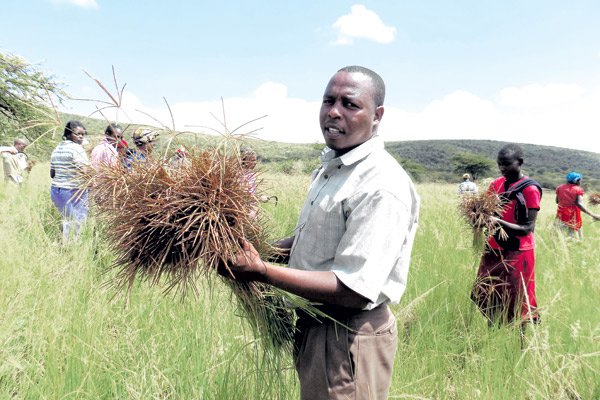The only time he was tempted to try maize farming was in 2012, and it was a big mistake. He planted 40 acres, only for his crop to be destroyed by the Lethal Necrosis Disease.
He has also tried a hand in sorghum farming but as fate would have it, the crop was attacked by birds from nearby Barina swamp.
He has started Rift Valley Hay Farmers Association, which has 80 members with the aim of advocating for their rights and setting uniform prices.
“The organisation will also invest on a common store where we can keep hay as we wait for the best prices,” says Chemirmir.
From a capital of Sh800,000, Chemirimir says his farm is currently worth about Sh25m. He owns several farm machineries like harvesters, bailers and tractors.
“There is good money in hay farming. I will never look for a job in my profession because this is where my heart is.”
He does not harvest his grass until he has orders from clients to save on the cost of storage and ensure he sells only fresh products.
Chemirmir has contacts of over 400 farmers to whom he sends text messages to alert them when the grass is ready for harvesting.
Churchill Kitavi, an agronomist from Kenya Seed, says farmers need to understand the climate of their areas to be able to select the right seeds for hay production.
“Some varieties of grass thrive in lower and medium marginal areas while others do well in wet areas. You must get all that information before starting to farm.”
He adds that though the crop suppresses weeds as it grows, it is advisable to spray soon after planting.
Nitrogen should also be added into the soil each time after harvesting to hasten the growth process.
To be a contracted seed producer, a farmer must apply to Kenya Seed to visit and assess the farm before signing the contract.
Stanley Karimi, a Senior Technical Officer at Kenya Agricultural and Livestock Research Organisation (KARLO), says farmers can break even in hay production when farming on as little as two acres.
What matters most, he says, is doing a market study and cultivating the right grass.
Boma Rhodes, he adds is the best and most marketable as it is rich in nutrients, such as crude protein, phosphorous and nitrogen, thus a favourite especially for dairy farming.
Other types of grasses include Kikuyu, Mbarara Rhodes, Kapedo Rhodes, Sudan grass, Pokot grass among others. Sudan grass, Karimi says, does well in dry areas while Boma Rhodes medium-dry areas.
He notes that quality seeds and good farming practices like weeds control, are the gateway to good harvest.

